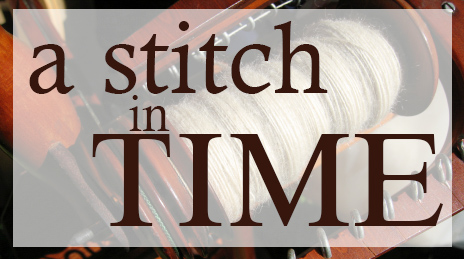A Stitch in Time

Kids are often seen as our representatives of the future, boldly trekking towards ‘the next big thing’: new technologies, new gadgets, new ideas and finding their way in the new world they create around them.
But whilst modern society is so often forward-facing, our kids are also a vital link in a chain extending back into the past, through the present, then stretching out into the unknown future.
‘Knitting’, which means ‘to knot’ in Old English, is more than just the looping of our yarn over and over to create our finished piece. It’s also a ‘joining together’ of old traditions and new stylings and techniques, as new generations take on the traditions of the past and make them their own, to suit their own aesthetics and needs.
Looking to the past, the origins of knitting are couched in mystery; ancient threads turned to dust with the passage of time. The earliest pieces date to the 11th Century, yet they spring out at us with a display of terrific mastery using multi-stranded colourwork, the purl stitch and complex shaping – these were not the experimental fumblings of trailblazers inventing a new craft. Although nålebinding (multiple loops formed on a single needle) can be dated back to the 3rd-5th Century, this still doesn’t explain how these ‘earliest’ known knitted pieces were crafted with such skill; we can only conclude knitting stretches back well beyond these remaining pieces, now lost to us in time.
Knitting left its Middle Eastern origins to follow the Mediterranean trade routes into Europe. Early knitting here was limited to royal and religious settings. Then during the 15th Century, Knitting Guilds were formed with rigorous entry requirements; applicants spending 6 years under the guidance of a master and travelling throughout Europe learning new patterns and techniques, before sitting a grueling entrance exam to prove themselves worthy. Exclusively male, these Master Knitters were highly valued by the nobility for their skills and the quality of their works. Alas, the invention of the first mechanical knitting machine (in 1589 by Englishman William Lee) saw the decline of handknitting in industry, but also marked one of the first steps on our path towards the Industrial Revolution.
Yet handknitting never completely faded away. Queen Victoria was said to be a prolific knitter, sparking a resurgence in all forms of handcrafts during the 19th Century. Italian fashion designer Elsa Schiaparelli brought knitting to the fore as an art form in the 1920’s with her innovative designs. During the Great Wars, the making of socks, balaclavas and gloves to support the troops became popular as the home front’s contribution to the war effort. And the Depression of the 1930’s saw people turn again to handknitting out of necessity, as scarcity lead to the reworking of old knitted pieces rather than buying new.
The 1950’s and 60’s saw handknitting enter the world of haute couture, and an explosion of bright, new styles of yarn hit the market as knitting also became incorporated into the school curriculum around the globe.
Mass production lead to the decline of knitting in the 1980’s; cheap goods flooded in and fashions moved towards other fabrics such as ‘sweatshirts’. But handknitting again rose from the ashes to become enshrined as an artform in the 1990’s, thanks to the sharing of skills and patterns, with the added ease of access to materials afforded by the internet.
The early 21st Century has seen a ‘Handmade Revolution’, with a variety of natural fibre yarns leading the way as a reaction against the ‘cookie cutter’ styles and fibres of the mass market. Innovative designs are flourishing as ideas are shared across the world via the internet, and large-needle knitting has evolved for knitters preferring quick results in our fast-paced modern world. The development of novelty and multi-shade yarns has allowed a generation of newcomers to the craft of knitting to achieve amazing results, without the years of experience necessary for success with cabling or intarsia in more traditional knitting. Newcomers can achieve early knitting success, which inspires them to attain further technical skills, whilst they are embraced by both the online knitting community and knitting groups in their local community.
So, teach our kids joy. Teach them belonging, and tradition and history. Help them become a part of the rich tapestry of this wonderful craft’s history. Let’s get knitting!
© 2017 Knitting Yarns by Mail
http://knittingyarns.com.au
